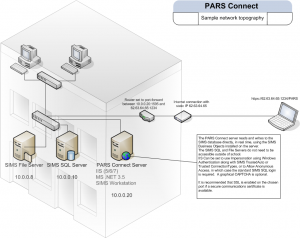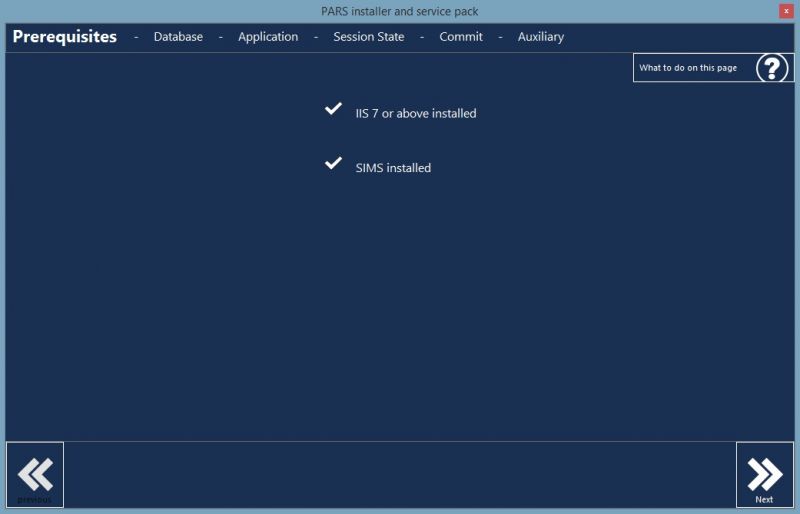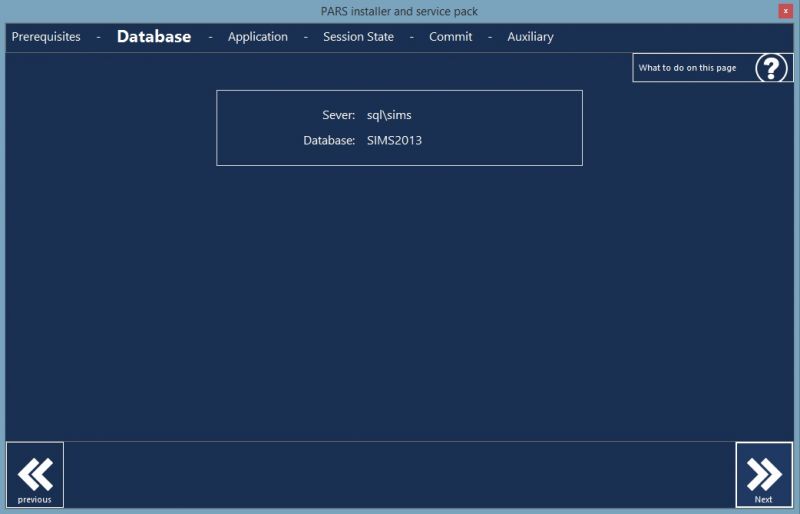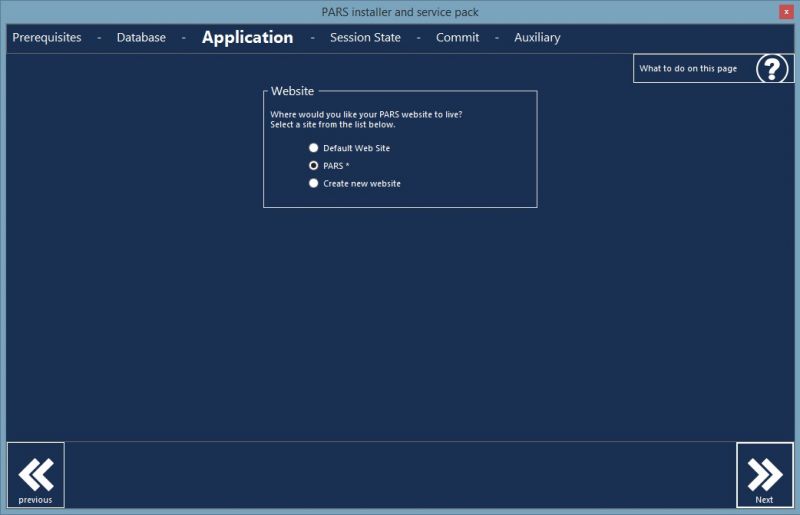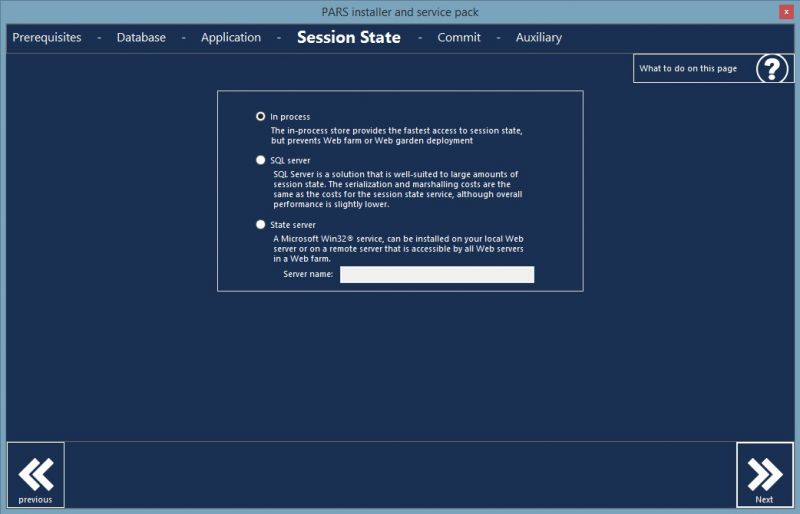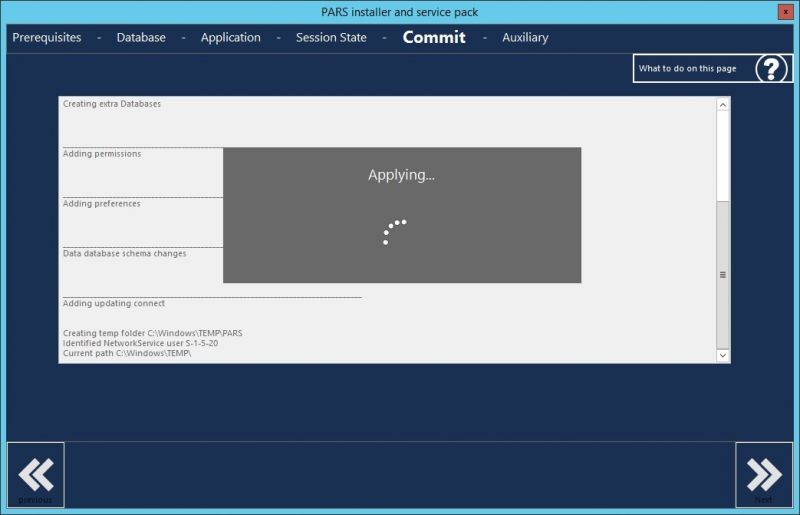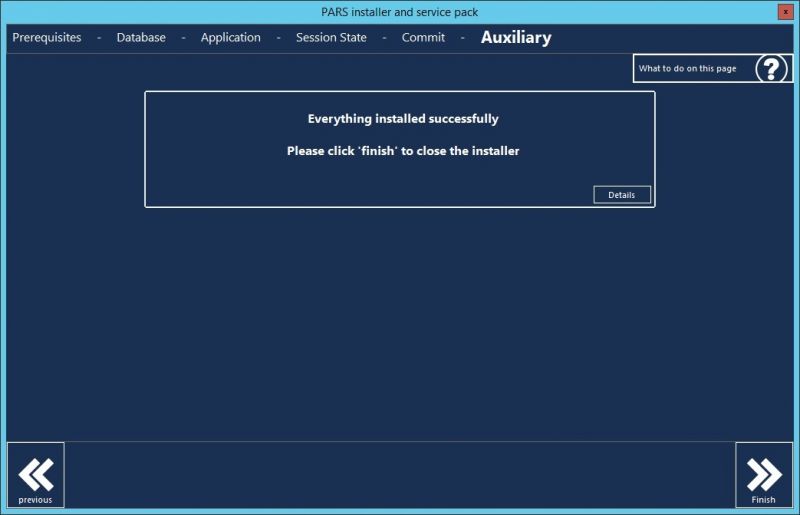Difference between revisions of "Installing PARS Connect"
| Line 1: | Line 1: | ||
[[Image:topology.png|thumb|The PARS Connect network topology]] | [[Image:topology.png|thumb|The PARS Connect network topology]] | ||
| − | PARS Connect | + | There are two versions of PARS PARS Connect & PARS .Net. PARS Connect is web-based and accessible via a web browser, meaning PARS Connect does not need to be installed on workstations and potentially can be accessed offsite. PARS .Net is only available on machines onto which it has been deployed using an msi file. <br> <br> |
| − | + | ||
| − | To install PARS | + | In either case, installation is performed on the IIS server. To install PARS on your web server, the server will need the following components installed: <br> <br> |
*SIMS .Net Workstation | *SIMS .Net Workstation | ||
Revision as of 14:27, 7 July 2014
There are two versions of PARS PARS Connect & PARS .Net. PARS Connect is web-based and accessible via a web browser, meaning PARS Connect does not need to be installed on workstations and potentially can be accessed offsite. PARS .Net is only available on machines onto which it has been deployed using an msi file.
In either case, installation is performed on the IIS server. To install PARS on your web server, the server will need the following components installed:
- SIMS .Net Workstation
- IIS (version 7 or higher)
- Microsoft .Net Framework (version 4.0 or higher)
Contents
Installation
Download the latest PARS service pack from our website, www.tascsoftware.co.uk and run it on the IIS server. A window will open - follow the instructions below to install PARS.
Prerequisites
This tab will check that you have the required prerequisites in order to install or update PARS. Also note that this must be performed on the IIS server. Before clicking "Next", check that both prerequisites have ticks next to them. If both of the prerequisites have ticks next to them, then you can move on to the next step of the installer. To do this, click the "Next" button at the bottom right of the window. Otherwise, install the missing components then rerun the PARS installer.
Database
At this stage the installer will check the connection to the SIMS database. If the installer cannot find your SIMS database, you will need to find out why then resolve the issue before running the PARS installer.
Click "Next" at the bottom-right of the window if you want to move to the next window, or stage of the installation/update. For anything else, don't click "Next". You can also click "Previous" if you want to look at any of the previous windows.
Installation
If you are installing PARS you will be asked for your SQL System Administrator (sa) password.
Enter your SQL sa password then click "Connect".
Updating
If you are updating PARS and you have recently migrated your server, you may be asked for your SA password. If you have not recently migrated your server and you are being asked to provide an SA password when updating PARS then do not proceed any further and contact our helpdesk immediately.
Application
We recommend installing PARS as a new website. However if you do not know where to install the files for the PARS website, you can use the Default Web Site instead.
Installation
You will see "Default Web Site" and "Create new website", as well as the names of any other websites hosted by this IIS server. None of these should have an asterix (*) after their names, as this would indicate PARS is already installed. If there is an asterix after any of the websites' names, contact our helpdesk.
Updating PARS
You will see a list of websites here, one of which should have an asterix (*) after its name. This is the website you should select. If you cannot see a website with an asterix (*) after its name, please contact our helpdesk.
Session State
This tab gives options for handling the session state of logged in users. If you are unsure of which option you need to select, or do not know the pros and cons of each option, then you should choose the top option.
Commit
As long as there are no errors, you will not see this tab. The installer will skip past this tab and perform all of the steps for you.
Auxiliary
You can click the "Details" button if you want to see your PARS Connect URL. Otherwise, click the "Finish" button to complete the PARS installation.
If you are server farming, you can click the "Details" button to mark this server as either the main server in the group, or a secondary server.
Extras
CAPTCHA
If you wish you can set a CAPTCHA which will be required for users to log in to PARS Connect. To enable this, find the web.config file on the IIS server (by default it is found in c:\inetpub\wwwroot\pars) and open the file in Notepad. Find the lines of text below and make sure that "value" is set to "On".
<setting name="CAPTCHA" serializeAs="String"> <value>On</value> </setting>
PINS
Each user can be assigned a temporary PIN that is required along with their password in order to log in. The PIN is valid for 5 minutes after it is issued and is send to a person's email address or as an SMS message when a person tries to log in. To enable this, find the web.config file on the IIS server (by default it is found in c:\inetpub\wwwroot\pars) and open the file in Notepad. Find the lines of text below and make sure that "value" is set to "On".
<setting name="PINS" serializeAs="String"> <value>On</value> </setting>
